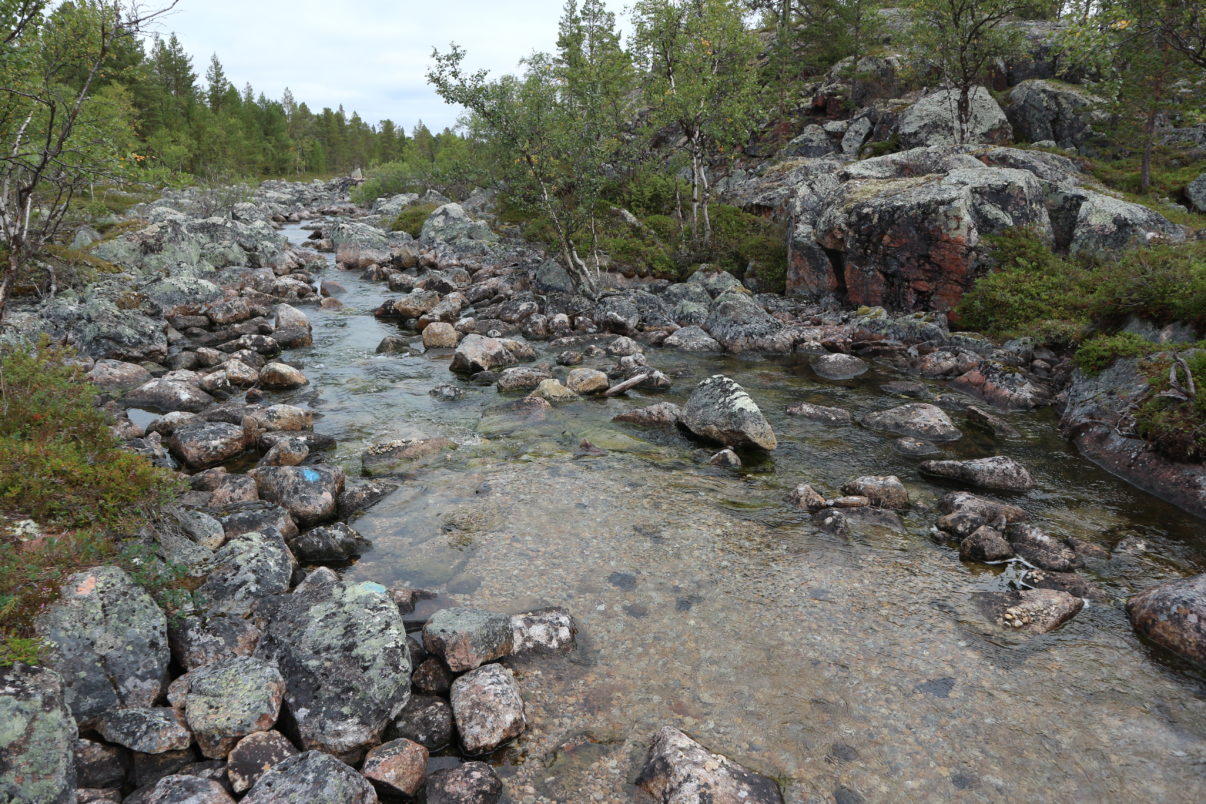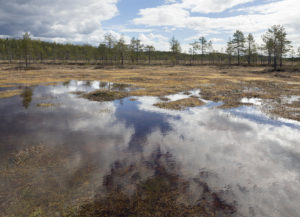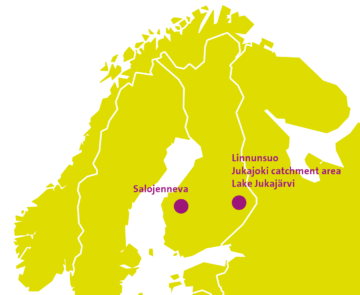Across Finland a growing number of wetlands, rivers and forests are now undergoing restoration. With rewilding efforts stepped up in 2019, loans from Rewilding Europe Capital are playing a central role.

Compelling comeback
What a difference a decade makes. Ten years ago fishermen from the village of Selkie in the Finnish region of Karelia woke to find thousands of dead fish floating in the Jukajoki River, poisoned by pollution from Linnunsuo, a nearby peat production area. Today, with support provided by Rewilding Europe Capital (Rewilding Europe’s enterprise loan facility), not only are Linnunsuo and the river system to which it is connected well on their way to being restored, but an ambitious and expanding rewilding programme now encompasses rivers, wetlands and forests right across Finland.
Tero Mustonen is director of Snowchange, a Finnish NGO and European Rewilding Network member which has played an instrumental role in the rewilding process. He expects the scope and positive impact of the process to continue their upward trajectory.
“Rewilding in Finland has already resulted in the return of thousands of migratory birds and the recovery of climate critical peatlands, while trout will soon ply the waters of our restored rivers again,” says Mustonen. “With the ongoing help of Rewilding Europe Capital and other partners, our rewilding efforts are now expanding rapidly.”
Miracle marsh

Snowchange specialises in the restoration and recovery of damaged landscapes caused by commercial exploitation, with a particular focus on sites formerly used for intensive forestry and peat production. In 2017, Rewilding Europe Capital (REC) provided Snowchange with a 75,000-euro loan to purchase and conserve the 110-hectare Linnunsuo wetland, the former peat production area responsible for fish deaths in the Jukajoki River in 2010 and 2011.
By the time it was bought, Linnunsuo was already undergoing restoration, financed by the operators of the site. This essentially involved rewetting the area, a process which will eventually transform the site from a carbon source into a carbon sink.
Since its purchase by Snowchange, Linnunsuo (which means “bird marsh” in Finnish) has continued its dramatic return to health, developing into a highly regarded wetland habitat for rare birds and mammals, including sandpipers, northern pintails and wolverines.
“The Linnunsuo site continues to rewild itself really well,” says Mustonen. “As of 2019, a total of over 190 bird species have been seen, with over 30 of these nesting in the area. Each autumn Linnunsuo is an important stop for migratory birds, with the wetland servicing tens of thousands of geese. Sometimes there can be up to 20,000 geese. This is the time Linnunsuo really lives up to its name.”
Pollution mitigation
One of the main aims of the Linnunsuo restoration was to create a non-oxygenated ecosystem, thereby protecting the Jukajoki River from the acidic compounds and heavy metals released by former peat production. In this the rewilding approach also appears to be working.
“Recent monitoring from Linnunsuo and other restored sites indicates a highly improved pH and much diminished concentrations of metals,” says Mustonen. “The outflow pH from Linnunsuo is now a stable 6, compared to 2.77 at the time of the fish death incidents.”
Scaling up

At the end of 2018 REC provided Snowchange with a second loan of 200,000 euros. Backed by the Natural Capital Financing Facility (NCFF), a joint initiative of the European Investment Bank and the European Commission, the loan has already helped the Finnish NGO expand its rewilding efforts.
Backed by the new funds, significant new steps have been taken in the rewilding of the Linnunsuo / Jukajoki area in 2019. An additional 72-hectare piece of land, located next to Linnunsuo, has been purchased, enlarging the entire site to 182 hectares. The summer of 2019 saw surveys and ecological baseline studies completed on this “Linnunsuo NORD” site, which differs from the open wetland beside it.
“The news site will require different rewilding actions, including the removal of timber from overgrown marshy areas,” explains Tero Mustonen. “This work started last winter, and will continue this winter. Restoration with excavators will then start in the summer of 2020.”
Watershed moment
The restoration of the Linnunsuo wetland was just the first stage in the long-term restoration of the entire Jukajoki River watershed. Using the traditional knowledge of local Finnish-Karelian villages alongside the latest scientific techniques, Snowchange and partners aim to restore the nine square-kilometre Lake Jukajärvi and all inflowing rivers by 2025, enabling the widespread return of brown trout, grayling and potentially even the critically endangered landlocked salmon.
July and August saw significant work carried out on the Jukajoki to restore spawning habitat for trout and grayling. In total, over 650 tonnes of gravel was added in the restoration of 65 spawning sites along 1.3 kilometres of river. These high value fish were lost in alterations to the catchment area between 1950s and 1970s, mostly as a result of forestry and ditching. Snowchange are now hoping for a complete return of the trout population to spawn on the Jukajoki and sub-catchment areas.
Supporting livelihoods
Natural stocks of trout, which are an important indicator species for river system health, will soon be reintroduced to the restored habitats along the Jukajoki.
“We expect spawning by the early 2020s,” says Mustonen. “Fishing is an important cultural and subsistence livelihood activity for the Finnish people living in the Jukajoki area. By ensuring health rivers and fish populations, rewilding has a critical socio-economic function.”
Over the longer term Mustonen also wants to establish a ranger programme for the Linnunsuo / Jukajoki area, providing further economic opportunities for local communities.
“During the summer we already receive up to 100 visitors a day at Linnunsuo,” says the Finn. “The potential for nature-based tourism is clearly there. Rewilding has already brought a sense of wellbeing, pride and an affinity with nature to the villages of North Karelia. As people start to benefit economically, these connections will deepen.”
Countrywide expansion
Snowchange have also used the second REC loan of 200,000 euros to scale up rewilding across Finland. Among other sites purchased in 2019, the NGO has acquired a 30-hectare wetland in western Finland called Salojenneva, which is now showing early signs of following a similar transformation process to Linnunsuo.
It has also bought the first indigenous Sámi logged forests in the village of Sevettijärvi, located in the northeastern corner of Finnish Lapland. Forest restoration is currently under way, with restoration tools including controlled burns, the installation of fencing to allow the return of lichen (the primary food of reindeer), and natural succession.
With ongoing support from REC, Tero Mustonen looks ahead to the future of rewilding in Finland with huge optimism. “We’ve already had massive national and international interest in our achievements and goals,” he says. “In Finland the word of ‘rewilding’ is increasingly associated with the restoration of iconic Finnish landscapes, an enhanced and resilient wild nature, improved health and wellbeing, and combatting climate change with carbon sinks.”
Want to know more?
- Visit the Snowchange website
- Learn more about Rewilding Europe Capital
- Read more about rewilding peatland and climate change
